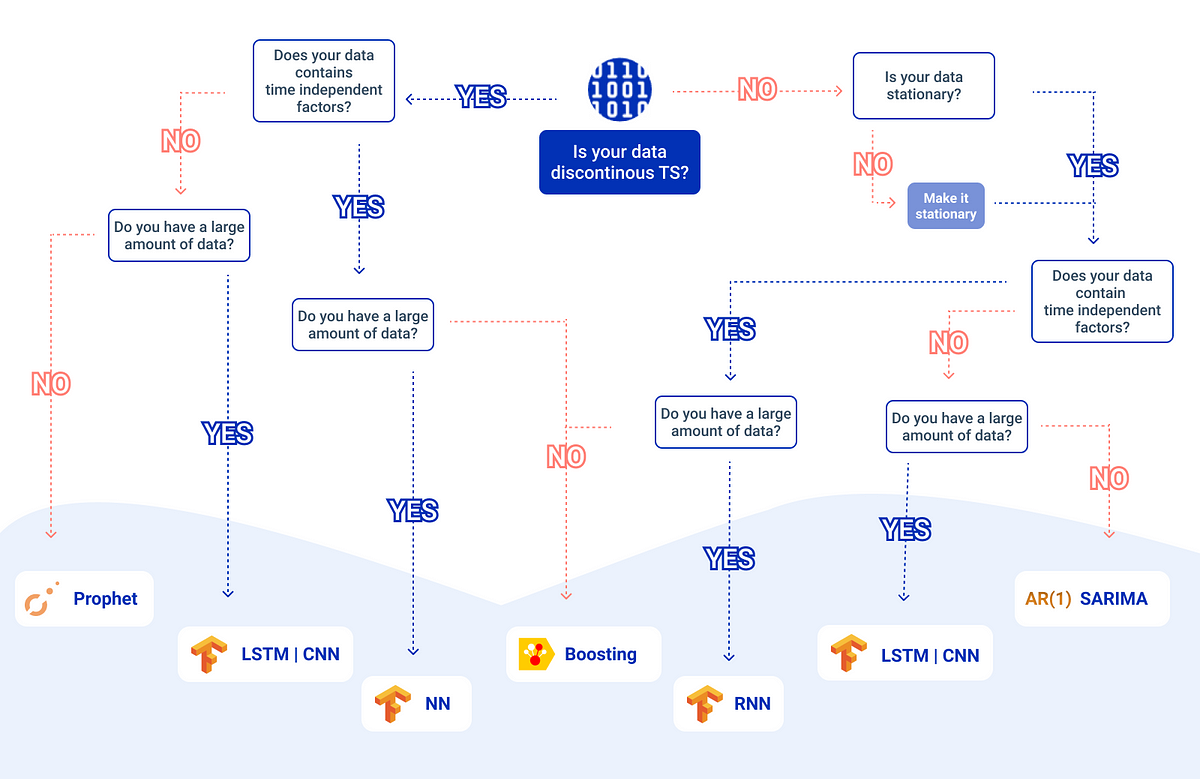Choosing the right model for predicting a time series is always a tedious task. In this article, we will browse the points to consider to make the right choice.
Each time series is different
Unfortunately, when you are confronted with real-world data, you quickly realize that you never face twice the same kind of data, especially when you are dealing with time-series.
This implies that there is no single solution for building accurate models giving precise predictions.
However, there are a few characteristics that can easily be identified and exploited to help you converge faster to the right model.
Continuity
When people think of time-series, they usually take for granted that these are smooth, continuous data. Let’s face the truth: life is not that simple.
Take for instance data collected on wind turbines. Some turbines do no record data when there is no wind, to save power. Or as this is usually the case with wind turbines, they are located in low populated areas where the connection to the internet isn’t stable. Connection losses are common, leading to gaps in data.
Dealing with non-continuous data can not be done with the same kind of models than continuous ones. ARIMA, SARIMA, Exponential Smooth might not work. Gradient Boosting methods like CatBoost are good alternatives in these cases.
#data-science #machine-learning #timeseries #timeseries-forecasting
